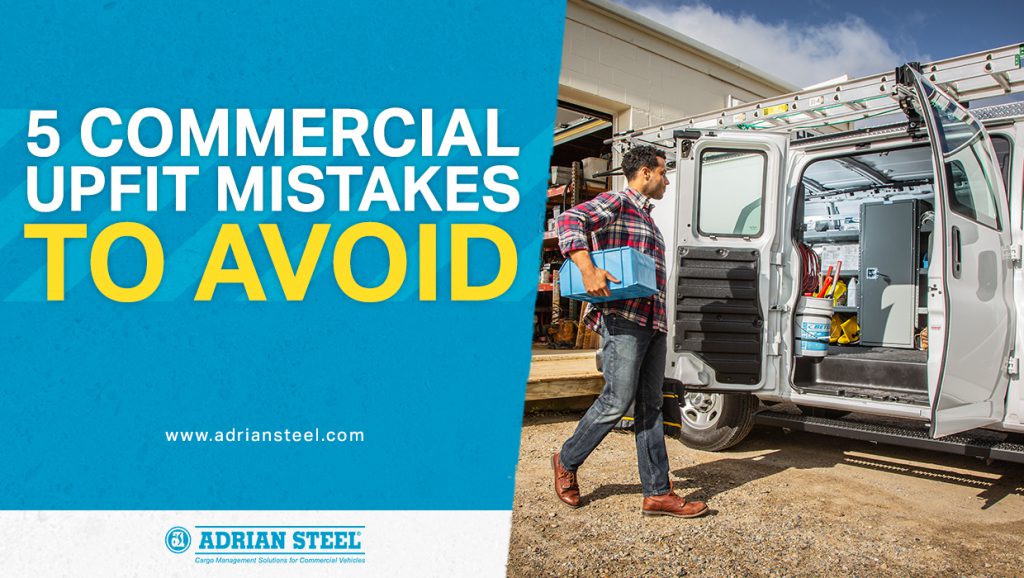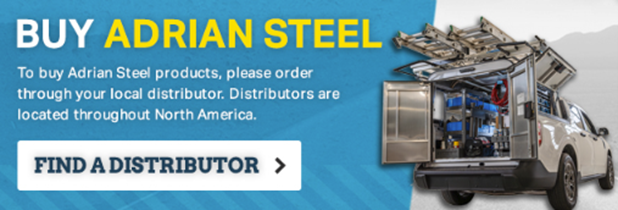Ready to upfit your commercial truck, van or fleet? Before you get started, make sure you aren’t making one of the common commercial upfit mistakes that we hear about all the time. You want your upfit to go smoothly and result in a van or truck that’s ideal for your needs. Read on to learn more about common mistakes and what you can do to avoid them.
1. Focusing on Price Over Quality
The benefit of a quality upfit is improving long-term efficiency in your vehicle. Like your vehicle, you want them to last for years and require the minimum amount of maintenance to keep in working order.
If you try to cut corners with your upfit’s cost, you’re going to end up disappointed. In many cases, a cheaper upfit means an incomplete upfit. You won’t be able to get the features and additions for your vehicle that you need.
More critically, however, is that cheap products never last. An upfit completed with the cheapest products will cost you more over the long-term in lost time and in replacing them. If you need to redo your upfit within the year because of poor quality parts, it’s costing you money instead of boosting your business!
While this primarily applies to products used in your upfits, it also applies to who completes your upfits. If you look for technicians that promise fast or cheap upfits, you may set yourself up for failure.
Instead, find reputable upfitters that will do the job right. Remember, safety is a major part of commercial vehicle upfitting. Unregulated upfits can put you or your employees at risk.
Like any long-term benefit, your cost analysis should include the likelihood of issues. Higher quality products and upfits translate to dramatically lower chances of problems with your vehicle.
2. Planning a “DIY” Upfit
Another critical commercial upfit mistake is the “DIY” upfit. This is when business owners or contractors take it upon themselves to buy parts and install them into their vehicle without the knowledge, experience or equipment of a trained and certified technician.
Improper installation is the biggest pitfall of the “DIY” upfit. Anything installed incorrectly in your vehicle will eventually fail. It may fall, damage your vehicle or create a hazard for the next person that steps into your van cab.
The second issue with DIY vehicle upfits is lack of planning. Quality commercial vehicle upfits are a “whole-vehicle” process. You need to look at your van or truck as a whole and think of what can be added and what the limitations are. Trying to upfit your van yourself little-by-little will waste space, decrease its efficiency and possibly overload your vehicle.
Ultimately, DIY upfits tend to cost you more in the long-term than going with a reputable technician who can help you find the right parts and install them safely.
3. Not Knowing Your Vehicle
Do you know what your vehicle’s maximum capacity for weight is? Do you know about properly balancing your truck or van to avoid uneven wear and maintenance problems?
Don’t fall into the trap of dreaming of your ideal upfit without looking over the logistics. Read through your vehicle manual or look online if you must. Learn your vehicle’s maximum dry weight and how much wiggle room you need for when it will be packed with coworkers or heavy replacement parts to complete a job.
It’s great to come to your chosen upfitter with ideas and information about what you want. But if you go overboard, you may wind up being told that your vehicle can’t support all the products and features you want!
4. Not Listening to Outside Input
Many commercial upfit mistakes start and end with one person. This is because, when managing a fleet, what you need isn’t always what your team needs. You should always consider the needs of your company to maximize efficiency!
It’s true that your experience often means you know best, but that doesn’t mean you know everything. Include the input of those you work with and don’t forget to ask questions when you speak with the upfit technicians. They’ve done thousands of upfits, so they have information that can help you!
Often, input from your team will stop you from installing something you consider “necessary” when it wouldn’t help anyone. Upfits should always be done to improve efficiency or safety – wasted features are wasted money.
The options available for your upfit are staggering. Take your time and listen to those around you before you finalize any plan.
5. Copying a “Stock” Upfit
The best upfit for your vehicle is one designed specifically for your vehicle. That’s why we always recommend avoiding stock upfit plans. These don’t take business and personal experience into consideration, resulting in an upfit that doesn’t solve your unique problems.
A custom upfit guarantees that every shelf, bin or ladder rack installed has a purpose. You’ll achieve the maximum amount of efficiency your vehicle can support without wasting a dime on unnecessary additions.
While a custom upfit sometimes feels like it’s a major investment of time or money, don’t lose sight of the bigger picture. Once an upfit is done, it’s done – and its benefits stick with you for as long as your vehicle does. Having an upfit done right makes all the difference in the world.
Ultimately, your upfit should get your business operating at peak efficiency. The increased revenue you generate from being able to complete your jobs faster and easier lets the upfit pay for itself.
Adrian Steel manufactures contractor-grade products and storage solutions with your needs in mind. Our goal is to improve efficiency and reduce common headaches in your workday! Adrian Steel is always evolving with you. We can help keep you moving forward with the right upfit solution for you and your vehicle.
Our network of highly qualified distributors can help you create the ideal upfit for your vehicle.
Find a distributor near you to get started today!
Connect with Adrian Steel on Social Media to answer polls, get industry tips, see the latest equipment, and more!


